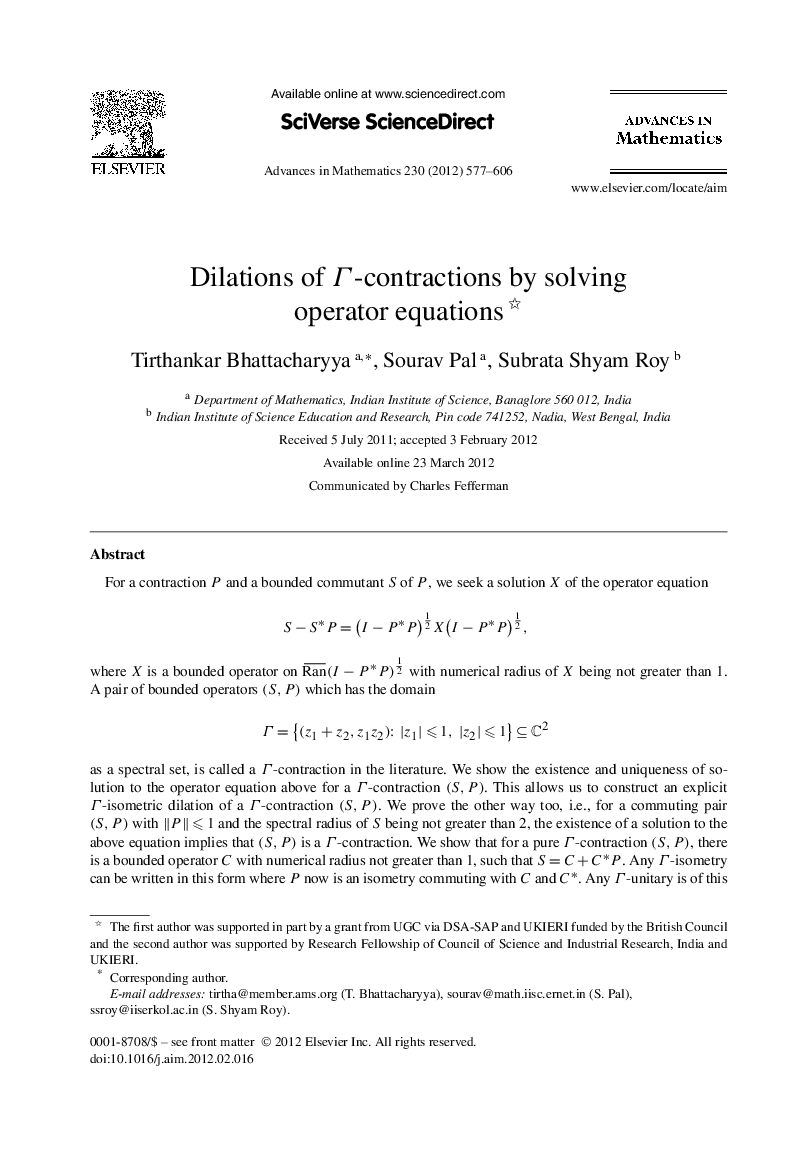| Article ID | Journal | Published Year | Pages | File Type |
|---|---|---|---|---|
| 4666411 | Advances in Mathematics | 2012 | 30 Pages |
For a contraction P and a bounded commutant S of P, we seek a solution X of the operator equationS−S⁎P=(I−P⁎P)12X(I−P⁎P)12, where X is a bounded operator on Ran¯(I−P⁎P)12 with numerical radius of X being not greater than 1. A pair of bounded operators (S,P)(S,P) which has the domainΓ={(z1+z2,z1z2):|z1|⩽1,|z2|⩽1}⊆C2 as a spectral set, is called a Γ-contraction in the literature. We show the existence and uniqueness of solution to the operator equation above for a Γ -contraction (S,P)(S,P). This allows us to construct an explicit Γ-isometric dilation of a Γ -contraction (S,P)(S,P). We prove the other way too, i.e., for a commuting pair (S,P)(S,P) with ‖P‖⩽1‖P‖⩽1 and the spectral radius of S being not greater than 2, the existence of a solution to the above equation implies that (S,P)(S,P) is a Γ-contraction. We show that for a pure Γ -contraction (S,P)(S,P), there is a bounded operator C with numerical radius not greater than 1, such that S=C+C⁎PS=C+C⁎P. Any Γ-isometry can be written in this form where P now is an isometry commuting with C and C⁎C⁎. Any Γ-unitary is of this form as well with P and C being commuting unitaries. Examples of Γ-contractions on reproducing kernel Hilbert spaces and their Γ-isometric dilations are discussed.
